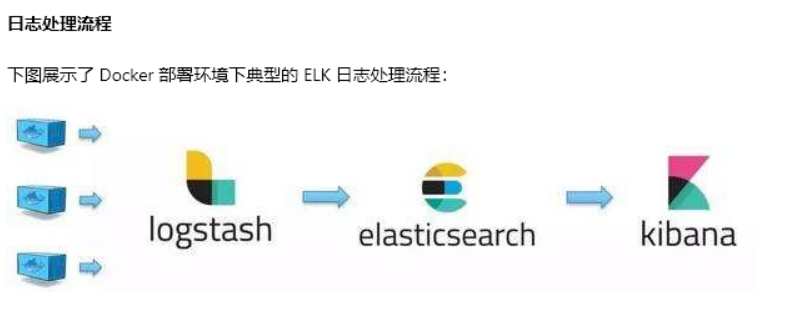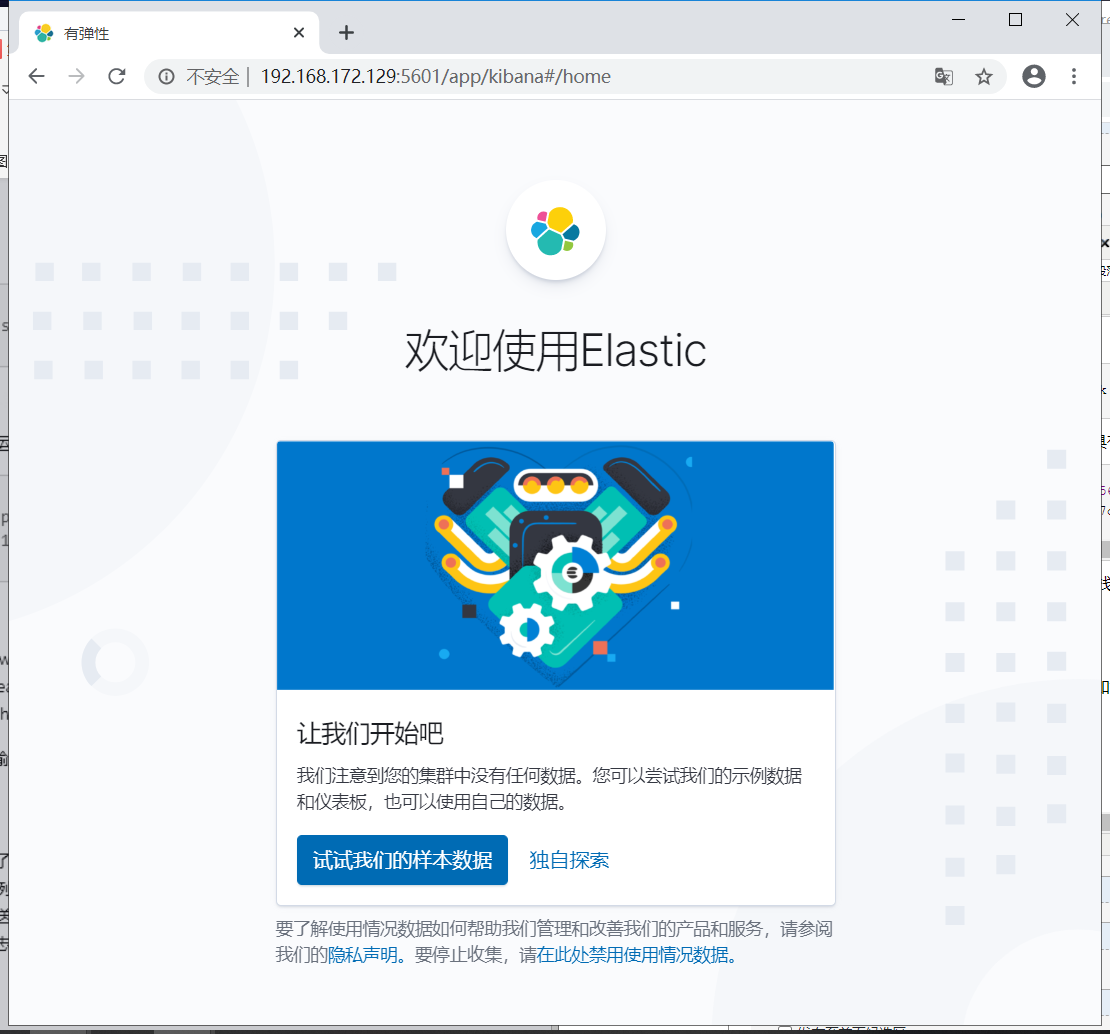docker日志elk
elk是三个软件的合称:ELasticsearch、Logstash、Kibana
ELasticsearch
一个近乎失明查询的全文搜索引擎,ELasticsearch的设计目标就是要能够处理和搜索巨量的日志数据
Logstash
读取原始日志,并对其进行分析和过滤,然后将其转发给其他组件(比如ELasticsearch)进行索引或存储,Logstash支持丰富的input和output类型,能够处理各种应用的日志
Kibana
一个基于javascript的web图形界面程序,专门用于可视化ELasticsearch的数据。Kibana能够查询ELasticsearch并通过丰富的图标展示结果用户可以创建dashboard来监控系统日志
日志处理流程

logstash负责从各个docker容器中提取日志,logstash将日志转发到 ELasticsearch进行索引和保存,kibana分析和可视化数据
安装elk套件
vm.max_map_count至少需要262144
[root@localhost ~]# cat /etc/sysctl.conf # sysctl settings are defined through files in # /usr/lib/sysctl.d/, /run/sysctl.d/, and /etc/sysctl.d/. # # Vendors settings live in /usr/lib/sysctl.d/. # To override a whole file, create a new file with the same in # /etc/sysctl.d/ and put new settings there. To override # only specific settings, add a file with a lexically later # name in /etc/sysctl.d/ and put new settings there. # # For more information, see sysctl.conf(5) and sysctl.d(5). vm.max_map_count = 262144
执行sysctl -p查看
[root@localhost ~]# sysctl -p vm.max_map_count = 262144
下载elk镜像
[root@localhost ~]# docker pull sebp/elk
启动堆栈,运行具有2gb堆大小的elasticsarch和具有1gb堆大小的logstash
[root@localhost ~]# docker run -p 5601:5601 -p 9200:9200 -p 5044:5044 -dit -e ES_HEAP_SIZE="2g" -e LS_HEAP_SIZE="1g" --name elk sebp/elk 1f42b594233c71663345143af7c1ca3c5042caf7c646b059e2f8b6ef9f9c3f7e
此命令发布以下端口,这些端口是正确操作elk堆栈所需要的的:
5601(kibana web界面)
9200(elasticsearch json接口)
5044(logstash beats界面,从beats接收日志,如filebeat)
打开浏览器,访问kibana web

安装filebeat
rpm -iv filebeat-7.7.0-x86_64.rpm
配置filebeat
文件里面要写出监控那些日志、将日志发送到哪里
#=========================== Filebeat inputs ============================= filebeat.inputs: # Each - is an input. Most options can be set at the input level, so # you can use different inputs for various configurations. # Below are the input specific configurations. - type: log # Change to true to enable this input configuration. enabled: true # Paths that should be crawled and fetched. Glob based paths. paths: #- /var/log/*.log - /var/lib/docker/containers/*/*.log - /var/log/messages
在paths中我们配置了两条路径
1.、- /var/lib/docker/containers/*/*.log 是所有容器的日志文件
2、 /var/log/massages 查看httpd容器日志所在位置
接下来告诉filebeat 将这些日志发送给elk 。filebeat可以将日志发送给elasticsearch 进行索引和保存
#================================ Outputs ===================================== # Configure what output to use when sending the data collected by the beat. #-------------------------- Elasticsearch output ------------------------------ output.elasticsearch: # Array of hosts to connect to. hosts: ["192.168.172.129:9200"]
#============================== Kibana ===================================== # Starting with Beats version 6.0.0, the dashboards are loaded via the Kibana API. # This requires a Kibana endpoint configuration. setup.kibana: # Kibana Host # Scheme and port can be left out and will be set to the default (http and 5601) # In case you specify and additional path, the scheme is required: http://localhost:5601/path # IPv6 addresses should always be defined as: https://[2001:db8::1]:5601 host: "192.168.172.129:5601"
启动filebeat
启动elasticsearch模块
filebeat modules enable elasticsearch
初始化filebeat
filebeat setup
systemctl start filebeat
systemctl enable filebeat
现在可以查看收集到的日志了

万能数据收集齐fluentd
安装fluentd
运行一个fluentd容器
[root@localhost ~]# docker run -d -P -v /data:/fluentd/log fluent/fluentd
重新编辑配置文件/etc/filebeat/filebeat.yml 将/data添加到监控路径中,删除其他的输入日志即可
#=========================== Filebeat inputs ============================= filebeat.inputs: # Each - is an input. Most options can be set at the input level, so # you can use different inputs for various configurations. # Below are the input specific configurations. - type: log # Change to true to enable this input configuration. enabled: true # Paths that should be crawled and fetched. Glob based paths. paths: #- /var/log/*.log #- /var/lib/docker/containers/*/*.log #- /var/log/messages - /data/*.log
重启filebeat
systemctl restart filebeat
监控容器日志,启动测试容器
docker run -dit --log-driver=fluentd --log-opt fluentd-address=localhost:32768 --log-opt tag="container-A" busybox sh -c 'while true; do echo "this is a log from A"; sleep 10; done;'
docker run -dit --log-driver=fluentd --log-opt fluentd-address=localhost:32768 --log-opt tag="container-B" busybox sh -c 'while true; do echo "this is a log from B"; sleep 10; done;'
--log-driver=flunentd 告诉docker使用fluentd的logging driver --log-opt fluentd-address=localhost:32768 将容器日志发送到fluentd的数据端口。 --log-opt tag="container-B" 在日志中添加一个可选的tag,用于用于区分不同容器
